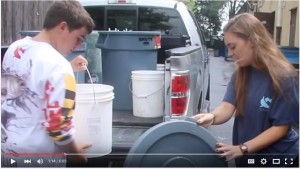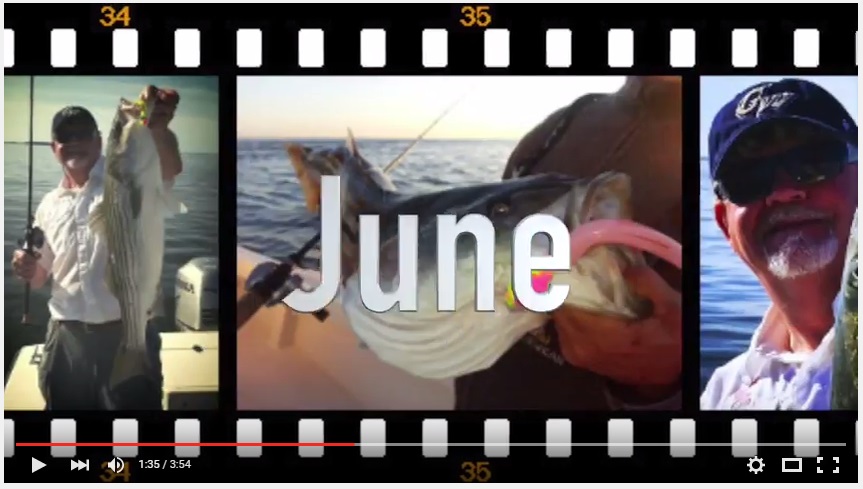oyster bars
 In January of last year I predicted on the HookedUp Fishing Forum that 2015 would be the best year for light tackle fishing in recent memory.
In January of last year I predicted on the HookedUp Fishing Forum that 2015 would be the best year for light tackle fishing in recent memory.
It was.
Thanks to the robust 2011 year class, there was enough striped bass in the Chesapeake Bay to produce great fishing for light tackle anglers of any skill level. Better yet, most of us caught fish way bigger than those 17-21 inch 2011 fish. That’s because when there are more fish in the Bay, the older and bigger fish have to mix it up with the little guys to compete for food. Thirty-inch stripers in July near the Chesapeake Bay Bridge were not unusual last year, and late-fall fishing in Southern Maryland was (and still is) the best it’s been in over a decade. That’s something to celebrate. Since 2015 was also a successful spawning year, we can hope for continued good striped bass fishing in the future. I’m especially looking forward to 2018. By that time, most of this year’s baby fish will be 18-inches or longer. At the same time, the 2011 fish will be approaching the 30-inch mark. Now that should be fun! If fisheries managers make the right choices, we should enjoy good striped bass fishing in the Chesapeake Bay for at least the next decade.
About seven years ago, as I was enjoying a happy hour at the Boatyard Bar & Grill, someone asked me what motivated me to promote light tackle fishing. It seems like a losing proposition, they surmised, because the more people you turn on to your kind of fishing, the more crowded your fishing spots will become. That prophecy has been fulfilled, but I have no regrets. My answer is the same now as it was then. I believe that, as more people take up light tackle casting, more anglers will become conservationists and join the struggle to protect and preserve the fish we love to catch. That means more fish for everyone. Light tackle casting by its very nature puts the experience of fishing above killing fish for meat. Oh, most of us will keep fish from time to time, but we don’t have to in order to have a great time. We understand that every fish we release is a payment forward toward the future of fishing.
If you enjoyed the fishing of 2015, this would be a great time for a New Year’s resolution. A very good one would be to give something back to the fish in order to repay a little of that enjoyment. If you’ve read my books, you know I believe that the majority of light tackle anglers are conservationists at heart and that we are naturally positioned to lead because others want to share our fishing success. I was tremendously encouraged in 2015 when I saw lots more young light-tackle anglers joining fisheries conservation efforts. A great example is CCA Central Region’s Living Reef Action Campaign. If you haven’t seen it already, take a few minutes to watch this video about the work of Brett Hackett, Summer Miles, and the rest of the Central Region gang.
There’s a lot of work to do. Habitat for fish, crabs, and other aquatic species in the Chesapeake Bay is under attack. Just as I am writing I am hearing that the Department of Natural Resources intends to begin destructive dredging on the historic Man-O-War Shoals oyster reef in the upper bay. At the same time, they’re suspending oyster restoration efforts near the Little Choptank river. There’s even a movement afoot to open the oyster sanctuaries to harvest. The intentional destruction of a living reef is illegal in almost every other part of the world. There are even places where you can be fined for dropping an anchor on a live reef. It’s a shame that the very department we trust to protect Maryland’s natural resources is so willing to put the financial interests of one group above those of everyone else in the state.
So get involved if you can. Groups like CCA Maryland need your help. Giving back can be as simple as setting a personal example or by sending a letter or email to a local politician in hopes of swaying their votes on key issues. If you’ve received a little enjoyment from this beautiful Chesapeake region, then please give back a little of your time and resources. If you’ve received a lot, then I hope you’ll give back as much as you can to make sure the enjoyment you’ve received is passed along to your children and grandchildren. We simply cannot take the amazing resources in our beautiful region for granted. Yes, 2015 was a great year for light tackle fishing and hopefully there will be many more to come. Watching out for the continued well-being of the fish and the habitat they live in is the right stuff for keeping the Chesapeake healthy and our sport strong. Happy new year from Chesapeake Light Tackle!
 If there is ever a season when it’s necessary to pull out all the stops in order to catch nice striped bass in the Chesapeake Bay, it’s late summer. There are plenty of small fish to be caught, but getting the bigger ones takes a lot more effort. In my presentations this year, I’ve advised fishermen to take what they know about the five reasons why striped bass bite – hunger, reaction, competition, territory, and curiosity – then consider the five senses fish employ when feeding – sight, smell, sound, feel and taste – and fashion their fishing techniques to maximize their chances. In other words, 5 X 5 = success.
If there is ever a season when it’s necessary to pull out all the stops in order to catch nice striped bass in the Chesapeake Bay, it’s late summer. There are plenty of small fish to be caught, but getting the bigger ones takes a lot more effort. In my presentations this year, I’ve advised fishermen to take what they know about the five reasons why striped bass bite – hunger, reaction, competition, territory, and curiosity – then consider the five senses fish employ when feeding – sight, smell, sound, feel and taste – and fashion their fishing techniques to maximize their chances. In other words, 5 X 5 = success.
When fish are hungry and feeding aggressively, they’re easy to catch. Fishermen who are lucky enough to find a school of hunger feeding fish blitzing beneath screaming birds are certain to be successful, no matter what kind of lures they use. Unfortunately, it’s not easy to find bigger fish feeding on the surface this time of year. I’m very envious of the few fishermen I know who have the time and money to chase blitzing rockfish all up and down the East Coast. Since most of us have to go fishing close to home in the limited time we have available, we have to look diligently for the few good stripers that might be around. When we’re lucky enough to find them, we usually have to work hard to convince them to take our lures. Sometimes, they just don’t want to bite. Read More!
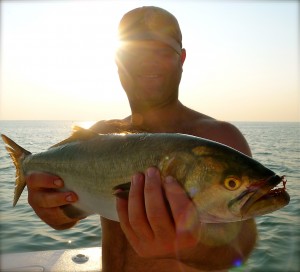 Not long ago we took breaking bluefish and rockfish for granted in the Chesapeake Bay. Unfortunately, times have changed. Since there are a lot fewer fish now, we have to look a lot harder and longer for summer breakers. Granted, it’s easier on some days than it is on others. In my book, Chesapeake Light Tackle, An Introduction to Light Tackle Fishing on the Chesapeake Bay, I dedicate several pages to methods for locating breaking fish. The best strategy for finding blitzing fish under working birds is to head straight for the closest oyster bar. In my reports, I often mention that I find fish over live, hard bottoms. By that, I mean places where there are active shellfish populations.
Not long ago we took breaking bluefish and rockfish for granted in the Chesapeake Bay. Unfortunately, times have changed. Since there are a lot fewer fish now, we have to look a lot harder and longer for summer breakers. Granted, it’s easier on some days than it is on others. In my book, Chesapeake Light Tackle, An Introduction to Light Tackle Fishing on the Chesapeake Bay, I dedicate several pages to methods for locating breaking fish. The best strategy for finding blitzing fish under working birds is to head straight for the closest oyster bar. In my reports, I often mention that I find fish over live, hard bottoms. By that, I mean places where there are active shellfish populations.
I typically plan all my fishing trips so that I keep my boat over as many oyster bars as possible. That includes when I’m just running from one place to another. For fish to feed on the surface in the Chesapeake Bay they need three primary ingredients. In the book, I abbreviate the formula like this: C + B/HB = BF. That’s current plus bait over hard bottoms equals breaking fish. Read More!
 “There are no more deserts. There are no more islands. Yet there is a need for them. In order to understand the world, one has to turn away from it on occasion; in order to serve men better, one has to hold them at a distance for a time. But where can one find the solitude necessary to vigor, the deep breath in which the mind collects itself and courage gauges its strength? There remain big cities.” -ALBERT CAMUS from THE MINOTAUR.
“There are no more deserts. There are no more islands. Yet there is a need for them. In order to understand the world, one has to turn away from it on occasion; in order to serve men better, one has to hold them at a distance for a time. But where can one find the solitude necessary to vigor, the deep breath in which the mind collects itself and courage gauges its strength? There remain big cities.” -ALBERT CAMUS from THE MINOTAUR.
I must apologize for the lack of fishing reports lately. I’ve required some time to concentrate on other interests, dance for a while to the songs in my head, and step back to reassess some priorities after over-extending a little. I’m currently writing from a boat off the Florida Keys. I’ve been here for the past ten days or so. It’s been relaxing, rejuvenating actually, and I’ve enjoyed some successful fishing. My time for tuning out is about over, so next week I’ll be back working in the big city, and perhaps more importantly, back in the swing of the Chesapeake fishing scene. On August 20th I’ll speak to the Broadneck/Magothy MSSA chapter about Strike Triggers and Catch & Release techniques. The following night, August 21st, I’ll travel to the Essex/Middle River chapter to present a similar talk. On August 25th and 26th I’ll have a book-signing table and also give a couple of talks at the 6th Annual Maryland Buck Wild Outdoors Expo. Look for me all day Saturday and Sunday. Read More!
 “I got eelgrass veins and brackish blood, I wrote my name in the tidal mud.” Daniel Kimbro from the song “Cape Charles.”
“I got eelgrass veins and brackish blood, I wrote my name in the tidal mud.” Daniel Kimbro from the song “Cape Charles.”
Eelgrass – it’s not something we’re used to seeing much in the Maryland portion of the Chesapeake Bay. According to the Maryland DNR website, it’s most likely found in high salinity areas of the Chesapeake Bay, approximately from the Choptank River south to the Atlantic Ocean at Cape Charles and in the smaller 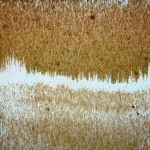 coastal bays. Because of poor water quality, bay grasses are at historically low levels, so it’s a little odd that we’re seeing eelgrass farther north than usual this summer. It’s probably a result of high salinity coupled with sustained warmer temperatures – we’ve just come through the warmest twelve consecutive months ever recorded in the United States. On my StructureScan sonar, eelgrass and its cousin wild celery grass, looks like underwater fields of waving amber grain. Baitfish hide in it, and rockfish love it.
coastal bays. Because of poor water quality, bay grasses are at historically low levels, so it’s a little odd that we’re seeing eelgrass farther north than usual this summer. It’s probably a result of high salinity coupled with sustained warmer temperatures – we’ve just come through the warmest twelve consecutive months ever recorded in the United States. On my StructureScan sonar, eelgrass and its cousin wild celery grass, looks like underwater fields of waving amber grain. Baitfish hide in it, and rockfish love it.
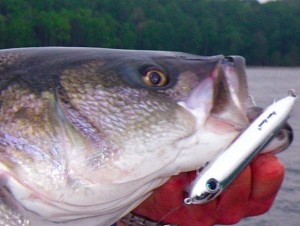 Have you been to the mouth of Eastern Bay looking for breakers lately? Find any? It will eventually get better, but so far they’ve been few and far between. If you think there are fewer breaking rockfish in the Chesapeake Bay this summer, you’re right. I believe it’s due to several factors including low salinity and less bait, but I’m afraid the primary reason is because there are fewer fish. The rockfish we normally see blitzing in the summer months are either juveniles too young to migrate up the coast, or residents that for whatever reason decide to stay in the Chesapeake year round. It’s not hard to figure out why there are so few resident fish this year. All it takes is a glance back to last February’s news reports when our Natural Resource Police pulled tons and tons of dead fish out of illegal gill nets. No one can say for sure how many illegal fish leave Maryland. It’s very possible that over a hundred thousand pounds of resident fish are stolen every winter from the Chesapeake Bay. Is it any surprise that the fish aren’t where they’ve always been this summer? It’s extremely frustrating, but since you’re probably here for a fishing report, let’s talk about how to find the few schools of breaking fish we have left. In this entry I’ll begin a series of tips for finding blitzing rockfish and bluefish in the Chesapeake. Read More!
Have you been to the mouth of Eastern Bay looking for breakers lately? Find any? It will eventually get better, but so far they’ve been few and far between. If you think there are fewer breaking rockfish in the Chesapeake Bay this summer, you’re right. I believe it’s due to several factors including low salinity and less bait, but I’m afraid the primary reason is because there are fewer fish. The rockfish we normally see blitzing in the summer months are either juveniles too young to migrate up the coast, or residents that for whatever reason decide to stay in the Chesapeake year round. It’s not hard to figure out why there are so few resident fish this year. All it takes is a glance back to last February’s news reports when our Natural Resource Police pulled tons and tons of dead fish out of illegal gill nets. No one can say for sure how many illegal fish leave Maryland. It’s very possible that over a hundred thousand pounds of resident fish are stolen every winter from the Chesapeake Bay. Is it any surprise that the fish aren’t where they’ve always been this summer? It’s extremely frustrating, but since you’re probably here for a fishing report, let’s talk about how to find the few schools of breaking fish we have left. In this entry I’ll begin a series of tips for finding blitzing rockfish and bluefish in the Chesapeake. Read More!



